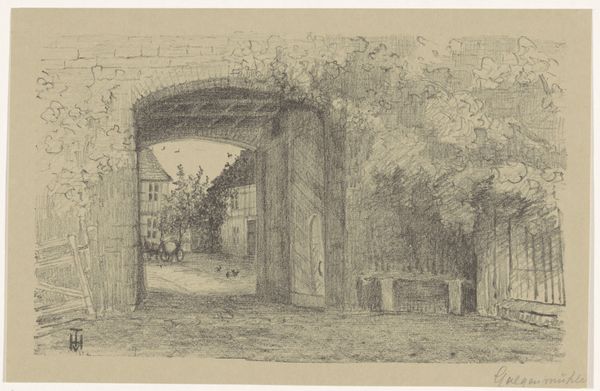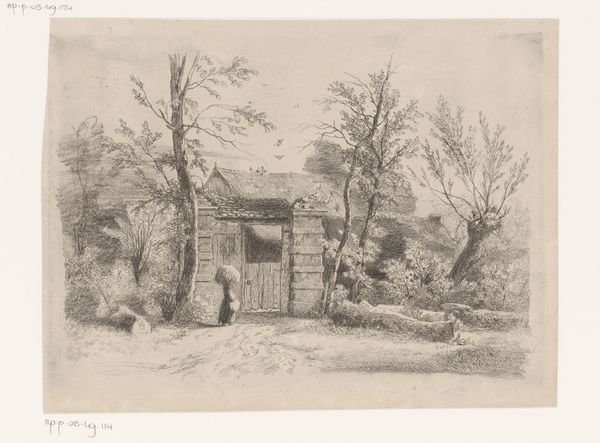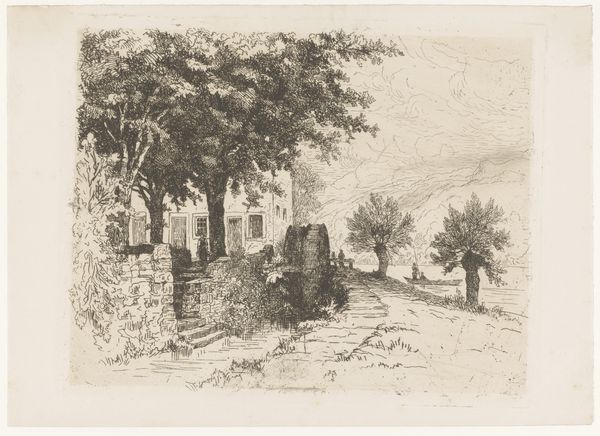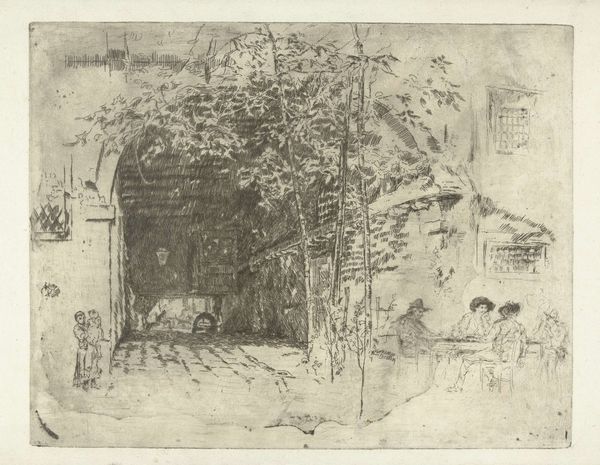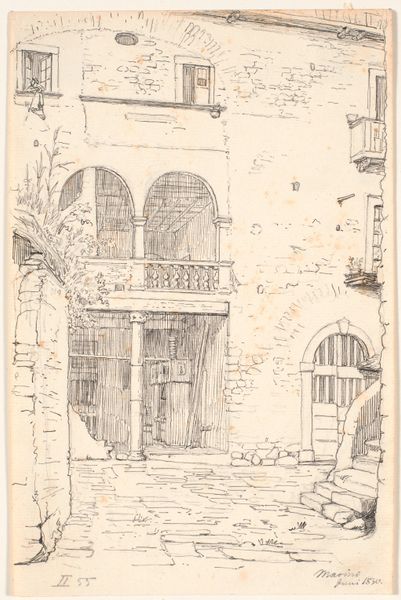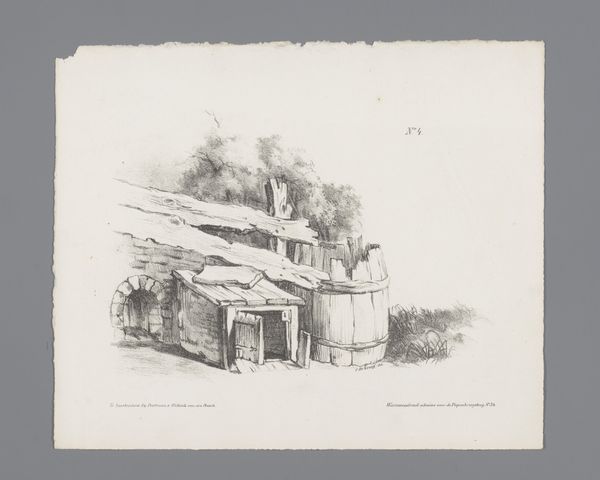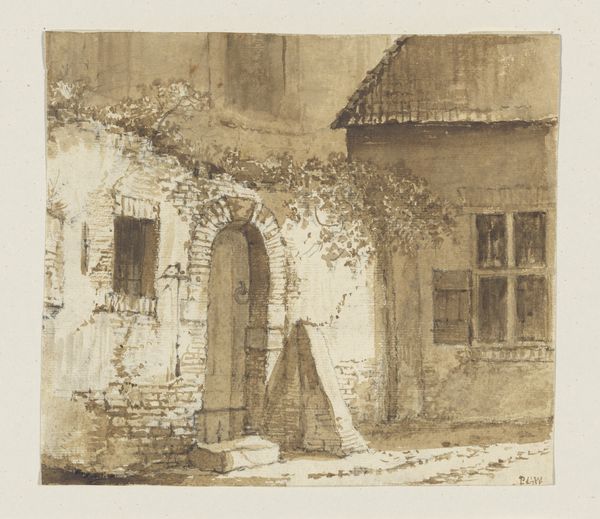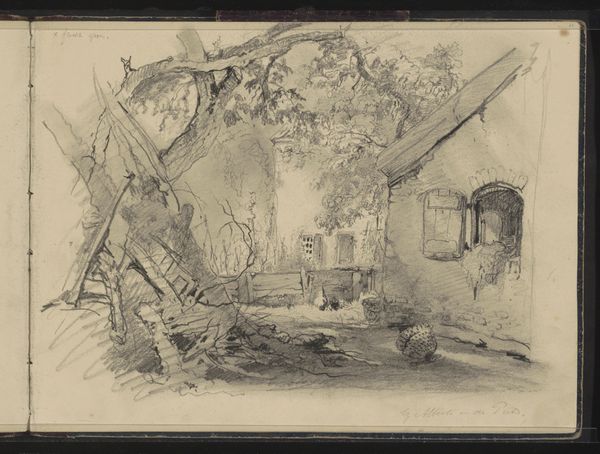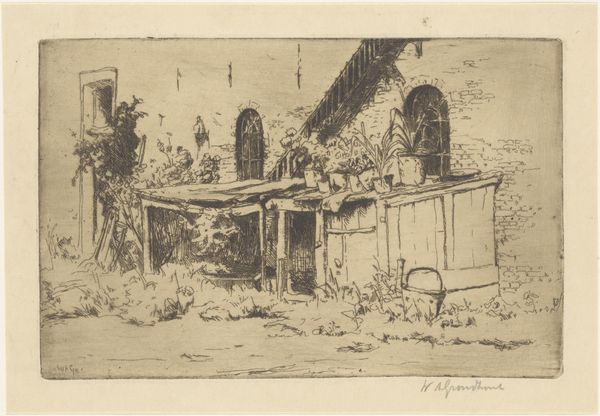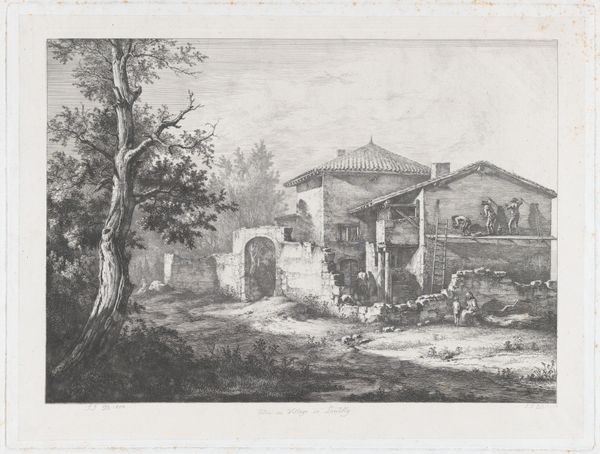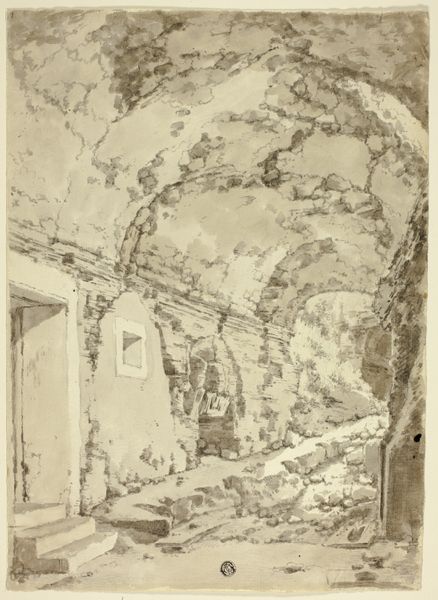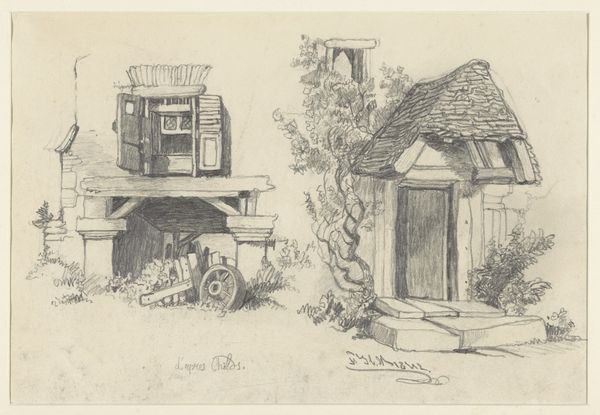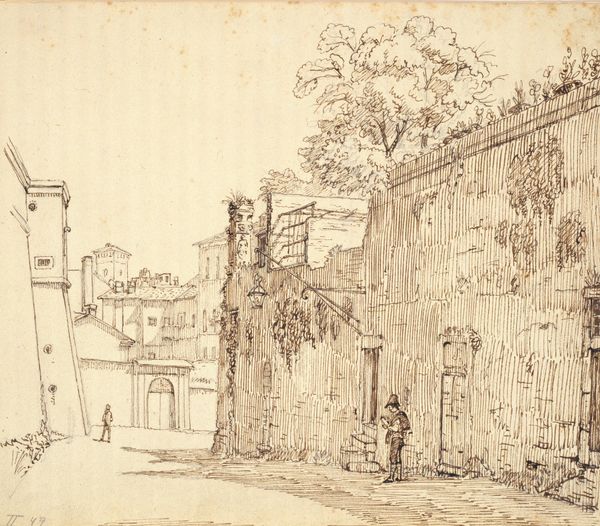
Gezicht door de poort van de Galgenmühle in Pfungstadt 1864 - 1909
0:00
0:00
drawing, etching, ink, architecture
#
drawing
#
etching
#
landscape
#
etching
#
ink
#
architecture
#
realism
Dimensions: height 247 mm, width 268 mm
Copyright: Rijks Museum: Open Domain
Curator: Before us is Cornelia Christina Johanna van Trigt-Hoevenaar's "Gezicht door de poort van de Galgenmühle in Pfungstadt," created sometime between 1864 and 1909. The piece employs etching and ink on paper. Editor: The first thing that strikes me is the contrast – that weathered stone arch framing such a quaint, serene scene. It creates an immediate tension. Curator: Indeed, the formal arrangement leads the eye deliberately. Note the gate’s arch, echoed by the structure’s roofline, and finally mirrored again by the curvature suggested by the distant foliage. This visual rhyme creates a harmonic progression into the composition’s depth. Editor: And the Galgenmühle itself... it looks so untouched by time. But the "Galgen" in the name – gallows – carries quite a dark, historical weight, doesn't it? Were public executions a common spectacle near this mill? Curator: It raises interesting questions about place and memory. Though on a formal level, one sees a delicate dance of positive and negative space, the subject—the mill and the method behind its naming—suggests broader implications, specifically life and death. Editor: Exactly! The rooster adds another symbolic layer. Is it meant to evoke vigilance? Or something else entirely? These kinds of domestic images are so easily mythologized. Curator: You are pointing toward what intrigues most, as those domestic elements contribute to an ambiguous play between realism and idealism, particularly in renderings like these of a specific time and place. This also affects how we visually respond to its symbolism and social significance. Editor: Agreed. The name alone invites morbid reflection. However, seeing such quotidian existence framed by the literal “gallows mill” allows a consideration of what everyday life was like, and maybe continues to be, with the inescapable specter of mortality always lingering nearby. Curator: The visual strategies employed work so carefully with its thematic and conceptual richness. It presents itself as simply a structure, and landscape, yet teems with understated commentary and potential symbolism. Editor: Van Trigt-Hoevenaar invites us, really, to find a strange comfort in how history quietly echoes within these familiar forms.
Comments
No comments
Be the first to comment and join the conversation on the ultimate creative platform.
